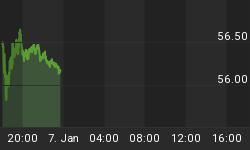LET'S LOOK AT THE FTSE DAILY CHART

Last week I point out the existence of a 144 calendar day time period from low to high. This time period has a history of being resistance in "Time" and producing counter trends and even changing trends in this index. I couldn't see anything on the chart to indicate a change in trend but a first degree counter trend is always possible (move down of one to four days).
The index has come down 4 days and tested the previous high which is normal support to hold the trend intact. The test of that level occurred twice in the four days and needs to be a solid low or the index will be vulnerable to a much larger correction. So if the index is going to hold a strong trend it needs to start a move up now. The rally ending on the 144 vibration in time is a bit of a worry but if it can hold Friday's low it will hold the trend in a strong position. The other European indexes have lost some momentum so further correction is possible. Remember how the S&P had a 90 time period and showed that three day move down. But markets like to exhaust into significant highs I thought the exhaustion of this index would be more exciting than this has been. The next two charts will explain exhaustions and the significance of holding this current support in the FTSE.
LET'S LOOK AT THE S&P 500 INDEX DAILY CHART

I said markets like to exhaust or show a vertical move into highs. You can see an exhaustion because there is seldom (not always) any congestion, just a fast reversal and a few wide range days down. An exhaustion means the buyers have chased the market and exhausted their funds leaving no buyers to offer support when sellers show up. You can see the difference between the trend that started up from the low as it held the previous high on counter trend moves down of only 1 and 2 days an arced into the high the end of October. Now it is starting to struggle bit and volume is decreasing but I'm still looking for an exhaustion phase. Thursday could be important.
NOW LET'S LOOK AT THE DOW JONES COMPOSITE

Notice the exhaustion in the beginning of the chart. The move down following the exhaustion phase was immediate and sharp but never got legs past the initial 5 week move down. The next exhaustion phase ended in November and was followed by a sideways pattern that retraced very little of the advance and like all bullish consolidations had three tests and off and running again. You can see by the arrows the huge "spacing" that has developed between the support for the current trend and the previous resistance or previous highs. This is another exhaustion phase and when complete will show two or more back to back wide range days down. But until that occurs these markets are smoking and are in the process of spiking into a high of some sort.
Next week I'll draw up some probabilities for the pattern for a top to this style of trend.















